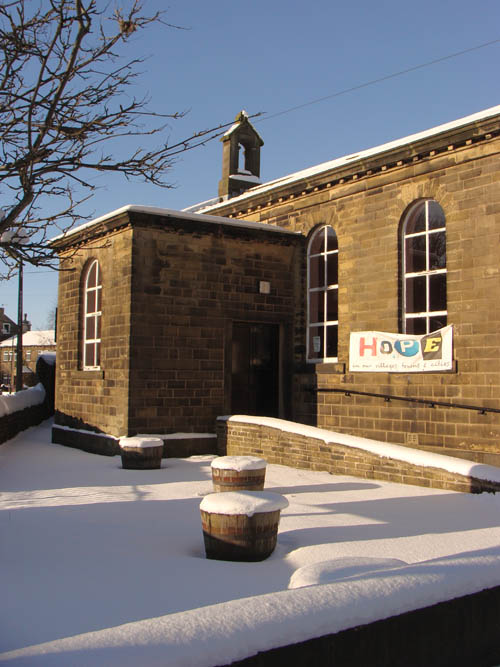
Haworth West Lane Methodist Church
William Grimshaw, the incumbent Anglican minister in Haworth parish church from 1742 - 63 was an evangelical and influential figure in the religious life of the Upper Worth Valley and beyond. As well as his regular church services he also became an itinerant speaker spreading the Christian message to thousands through open air sermons and informal meetings. Through his travels he met John Wesley and was heavily influenced by the Methodist approach to ministry, despite objections from his superior, the Vicar of Bradford.
At this time many Methodists had not separated from the mainstream church and many were worshipping within the Anglican church. Grimshaw was concerned that his successors would not be as sympathetic to Methodism as he, and in 1758 he helped to build the West Lane Methodist Chapel to ensure Methodists had a place to worship. The first trustees of the chapel include the Wesley brothers and Grimshaw himself.
For some time Methodists continued to worship in the Anglican church but by the 1780-90’s there is an increasing dissatisfaction with the established Church and the Methodist movement begins to grow and establish in its own right. In Haworth however, the Methodist tendency was so strong that the parish church trustees were influential in securing a line of ministers whose beliefs were acceptable to them. Patrick Brontë, the parish incumbent 1820 - 63, was known to have Methodist leanings and attended West Lane Methodist Chapel with his daughter Charlotte to hear the sermons.
At various points in the late eighteenth and early nineteenth century the original West Lane Wesleyan Methodist chapel was rebuilt and enlarged and a Sunday school building added. In the 1950’s declining congregations and increased costs led to the church demolishing the chapel and moving into the Sunday school building next door, which is the chapel used today. Photographs of the original chapel building show it looked remarkably similar to the West Lane Baptist Chapel just down the street.
The hall at the front is in daily use as a community venue whilst the chapel is at the rear. It is a typically plain interior with a beautifully polished wooden alter and pulpit that have been brought over from the original chapel. William Grimshaw’s chair and an eighteenth century bronze plaque commemorating the first Methodist chapel are proudly displayed. On the exterior walls, two engraved stones from the original chapel have been transferred into the stone work, one of which was Grimshaw’s favourite Biblical quotation ‘To us to live is Christ to die is gain’. Round the back of the chapel, looking out over the Worth Valley are two graveyards containing some interesting headstones and memorials.